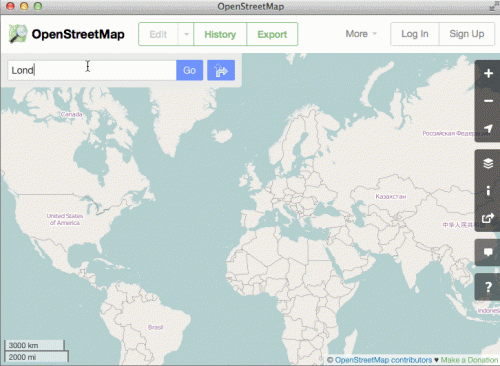February 19, 2015 report
OpenStreetMap adds A to B directions

(Phys.org)—The people who run OpenStreetMap.org (the foundation) have announced that A to B directions have been added to the open source web site. While acknowledging that adding directions has been done by many other websites, e.g. Google, Yahoo, they suggest it is a step forward for the site because it will allow for feedback loops that are not available on other web mapping sites.
OpenStreetMap (OSM) has been described by some as a sort of mapping Wiki, site—everything on it is generated by users. It was started in 2004 by British entrepreneur Steve Coast as an alternative to proprietary mapping applications. Up till now, its purpose has been to use geographic data to create maps of the world. Now it appears, the foundation has chosen to take the next step, by allowing users to type in starting positions and destinations, and in return getting directions on how to travel from one point to another.
What sets OSM apart is its user base—people all over the world have been helping build the maps and perhaps more importantly, adding informative posts that serve as personalized information. It is that personalized touch that the foundation believes will attract new users to the site looking for directions. People who live in an area know its geography better than anyone else, why not let them offer suggestions on how best to get from one place to another. Users can add information about one-way streets, for example, or visual clues, such as a mountain in the background when traveling for a portion of trip. The site also allows users to add non-essential but interesting information, such as bridge names, historical building names, or local nick-names for parks, urban areas or other geographic regions. Another plus is that it allows for better information in less crowded places. Little towns and villages are not well supported by Google and other bigger sites—typing in a rural address often results in misses by miles. With OSM, users in remote places are free to add, or contradict information they find, resulting in constant refinement.
OSM is already used by other web sites, such as MapQuest, FourSquare, etc., adding directions might make them a better option for the simple reason that there are no strings attached.
More information: blog.openstreetmap.org/2015/02 … n-openstreetmap-org/
© 2015 Tech Xplore



















